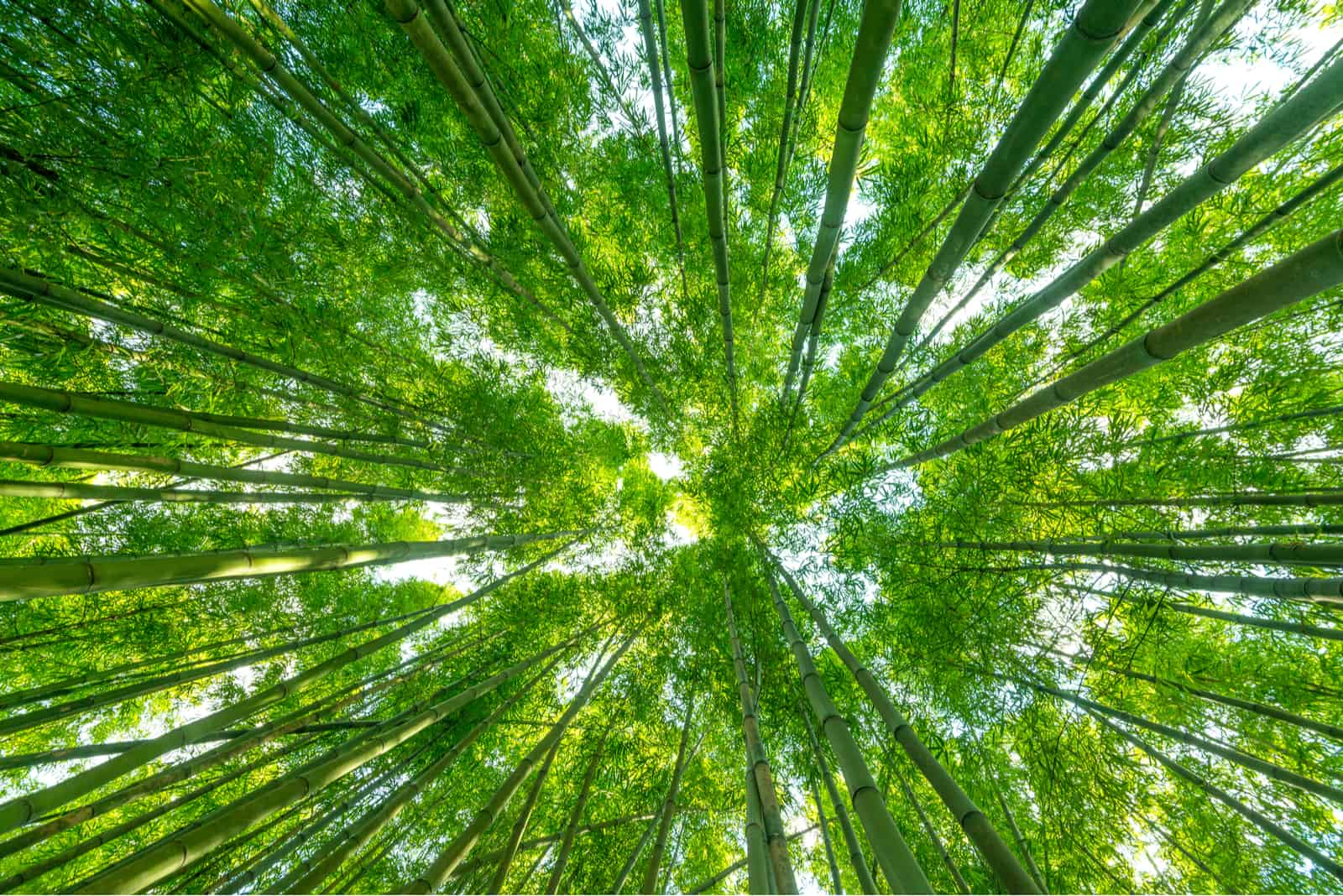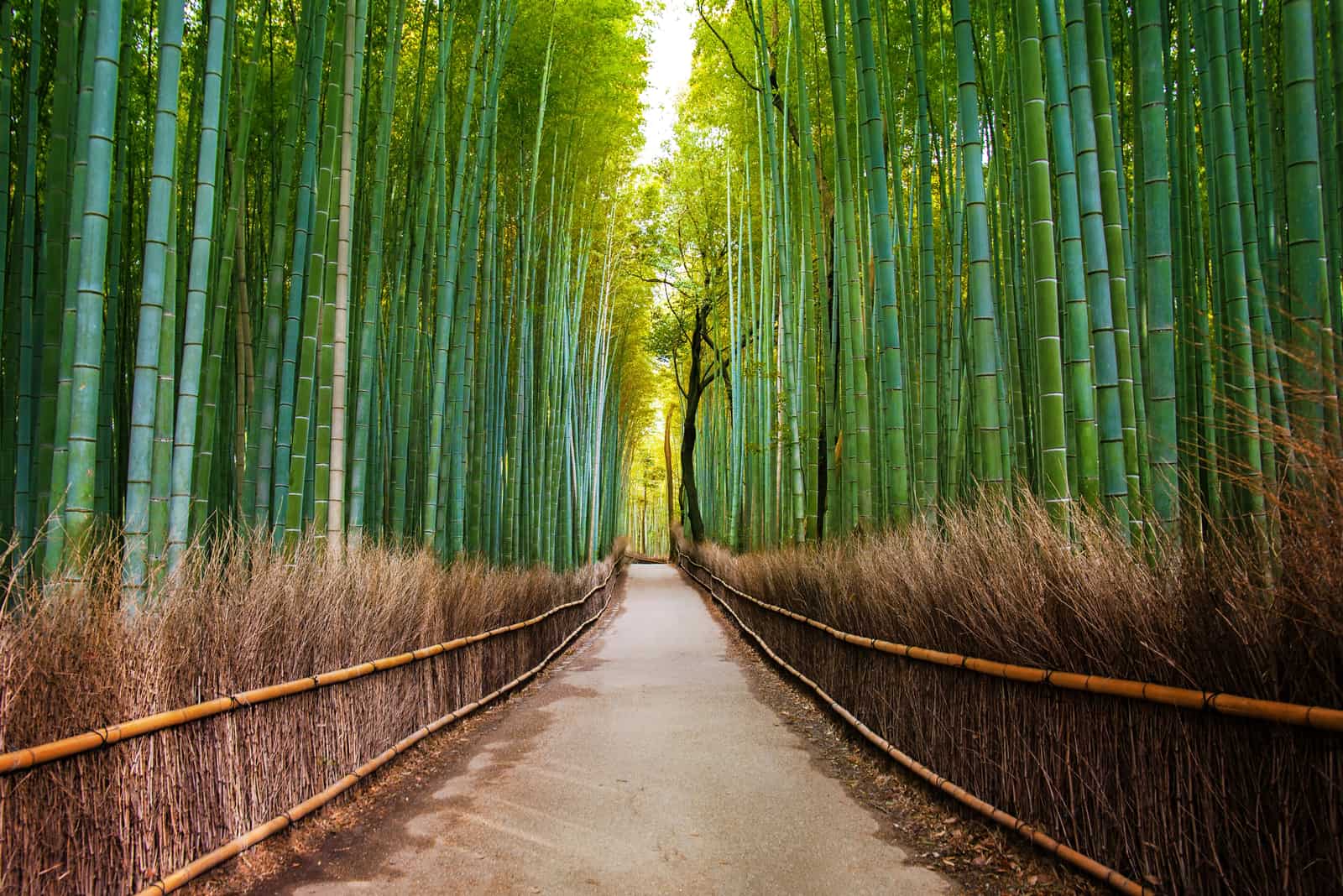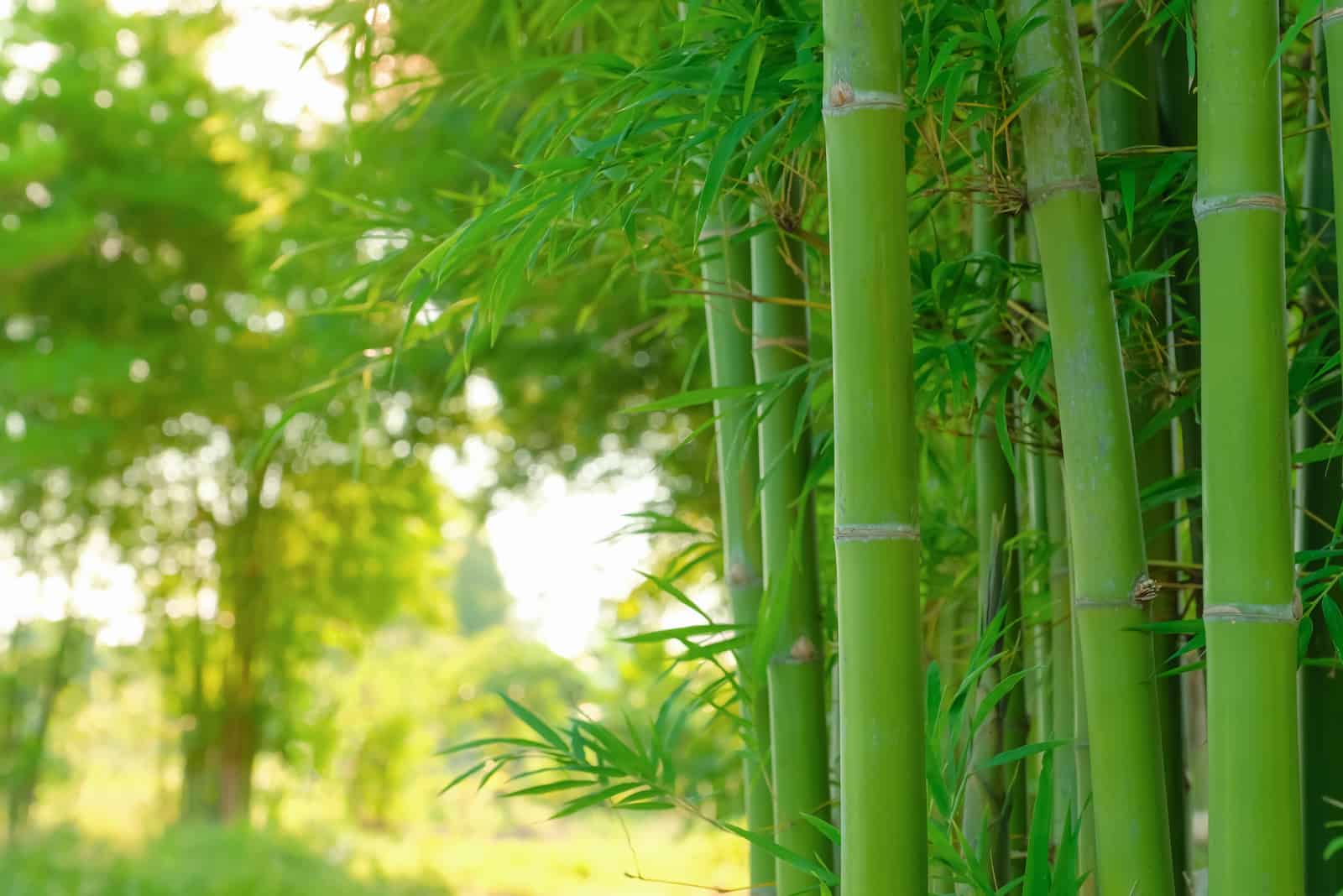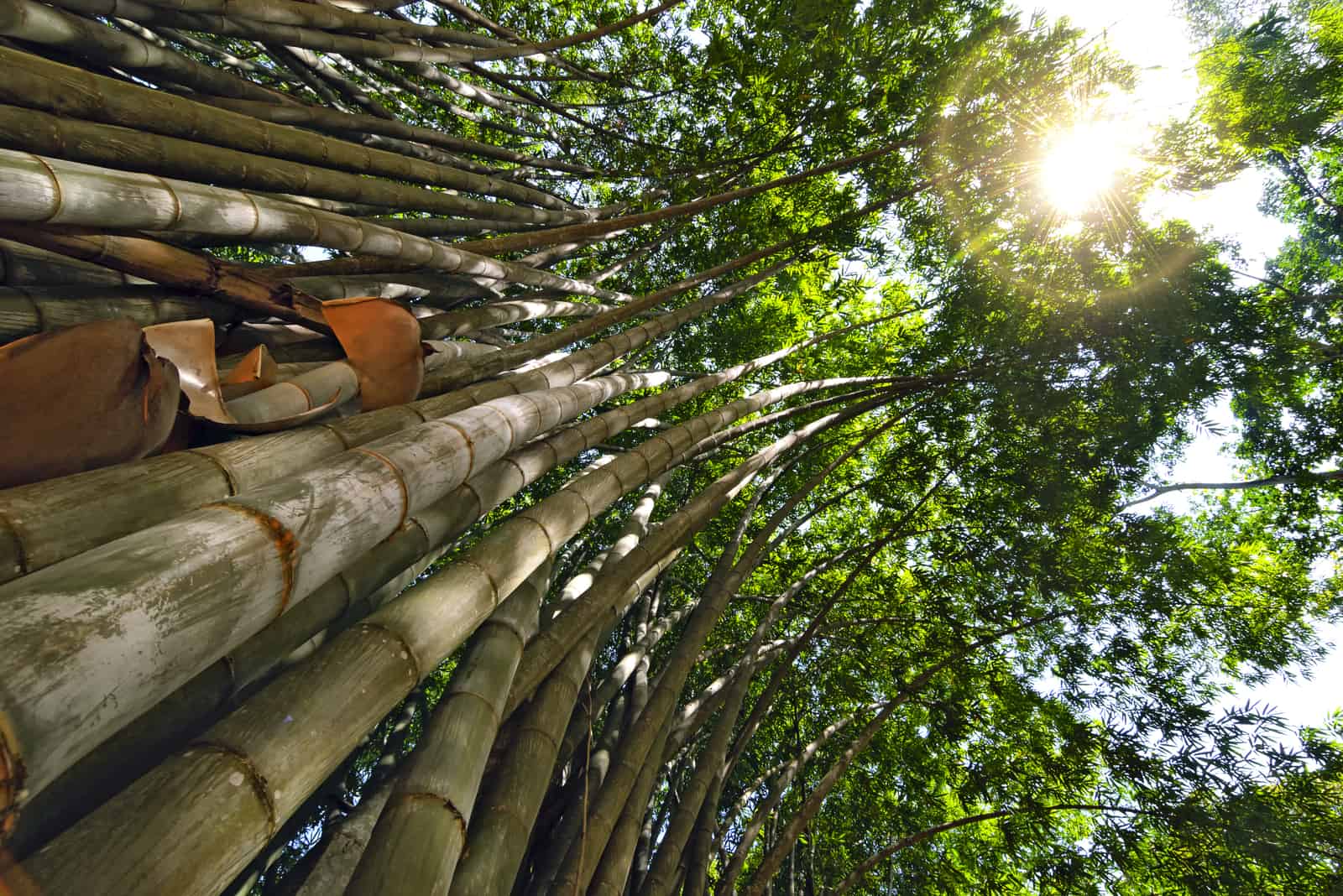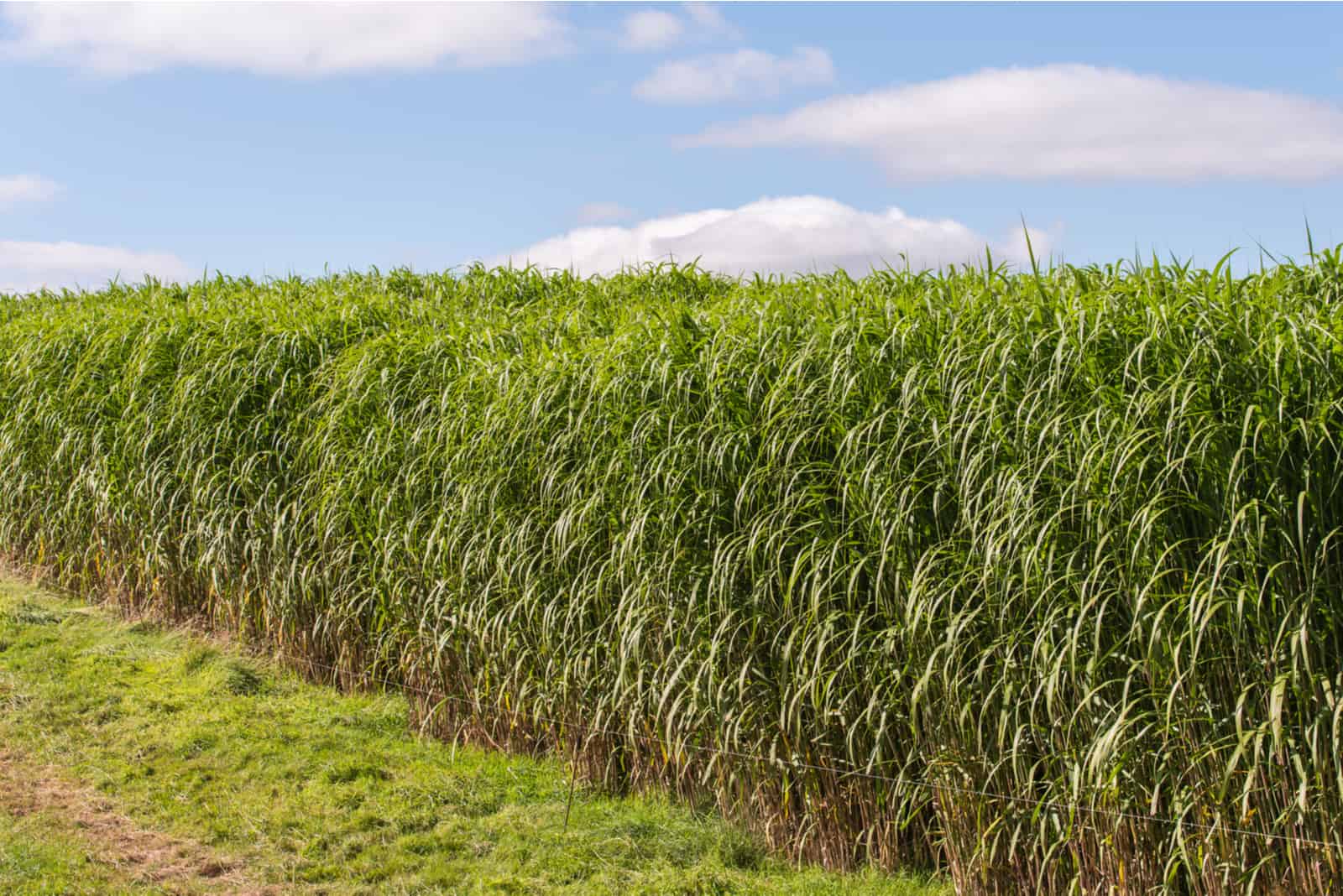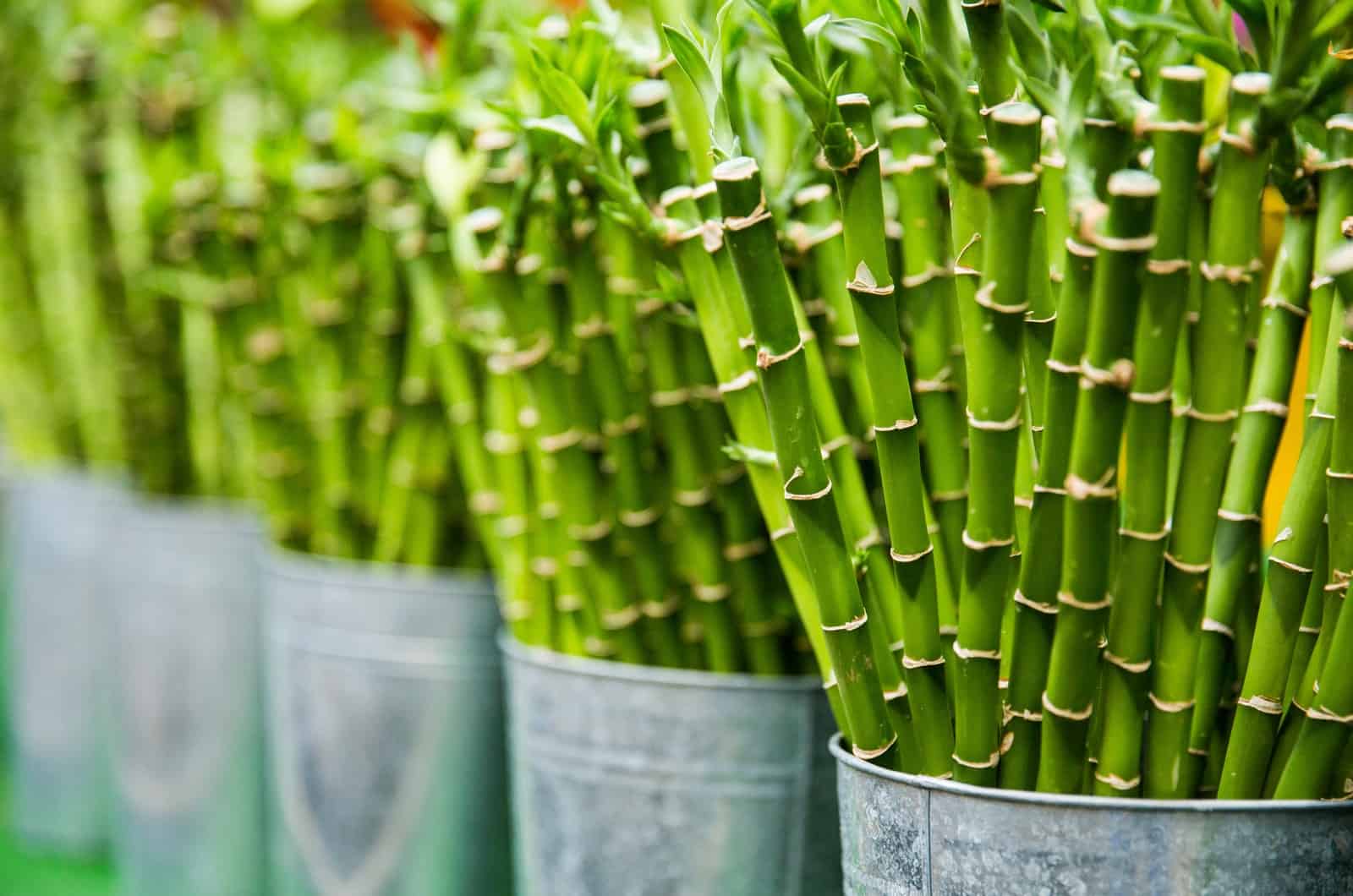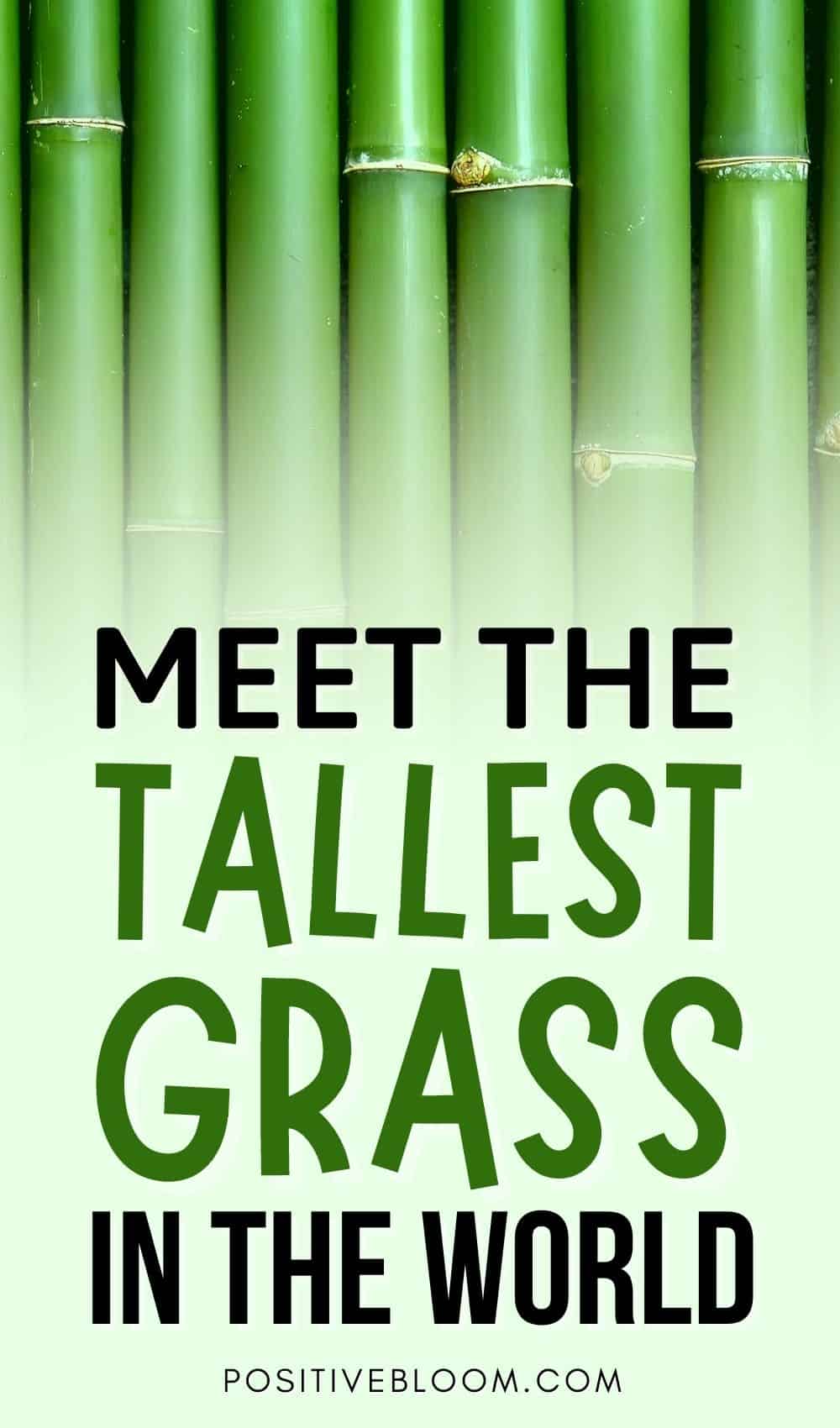Have you ever wondered what the world’s tallest grass is?
Well, you might be surprised to find that it is actually bamboo. Even though it might resemble a tree, bamboo is actually a flowering plant from the family of Bambusoideae, within the Poacea grass family.
An evergreen perennial that can measure more than 100 feet (35 meters) in height, there’s little wonder it holds the title of tallest grass in the world.
If you’re intrigued, read the rest of this article to find out more information about this wondrous plant.
How Tall Can a Bamboo Grow?
The average height of a typical bamboo plant is 60-80 feet (20 to 30 meters), but they can measure up to an incredible 100 feet tall (35 meters) or more! It emerges from a stem or a culm that doesn’t grow in diameter, but actually remains constant throughout the bamboo’s growth.
Despite being hollow, the stability of the clumps and the necessary nutrients are provided by a thickening rhizome, which is an underground root-bearing stem.
Known as one of the fastest-growing plants in the world, bamboo can grow up to 4 feet ( 1 meter) per day, vastly outstripping other plants around it. The taller it grows, the faster its growth rate.
However, not every bamboo grows this fast, as its potential growth is affected by climate and environmental factors. The types of bamboo that are reported to attain astonishing heights are Moso (Phyllostachys edulis), Madake (Phyllostachys bambusoides), Guadua, and Dendrocalamus.
In order for bamboo to sprout up from the ground, it requires a lot of sunlight, aeration, and preferably organic soil. It prefers basking in full sun, so soaking its bottom in water might lead to root rot as a result of its shallow roots, even though it requires regular watering as a baby plant.
When home-grown, bamboo’s development can be encouraged with the use of the correct fertilizer and mulch. Bamboo needs to be controlled and pruned in a timely manner, otherwise their intrinsically linked root system will endlessly sprout additional shoots, turning your beautiful garden into a jungle-like forest.
Where Can I Find Bamboo?
With 1,500 species, bamboo used to be present on almost every continent, with the exception of Europe. Nowadays, its natural habitats are said to be tropical, subtropical, and temperate climates, with the highest concentration being found in Asia.
The traditional classification of bamboo is Bambuseae, or woody bamboo found in tropical regions of Asia and South America, Arundinarieae or temperate woody bamboo found in South Asia, East Asia, and North America, and Olyreae, which differs from the two subtypes as it’s a soft, herbaceous grass found in tropical forests.
However, as a result of its adaptability to diverse temperature conditions, bamboo grass can be grown in almost every part of the world.
What Is Bamboo Used For?
If anything can help prevent the bamboo population from overspreading and taking over vast acres of land, it would definitely be pandas! These adorable, black-and-white, and chubby little bears eat bamboo as their main food source.
Bamboo is deficient in nutrients, so an average panda needs to eat between 10-15 kilos of bamboo every day to satisfy its dietary needs. Scientists believe that the panda’s natural inclination towards this grass stems from bamboo’s high abundance and lower predation risk.
Unlike pandas, humans have found plenty of ways to put bamboo to good use. Fans of Asian cuisine know that bamboo is an essential ingredient in many of its tasty dishes.
In addition, bamboo has often been applied as a building material in the construction of roads, buildings, houses, schools, scaffolding, boats, and even martial arts weapons! If you play a wind musical instrument, there is a high chance it was made from bamboo – and this list of bamboo applications is far from complete!
It is incredibly versatile, so bamboo is ideal for the manufacturing process. Easily bent, shaped, curved, dried, stretched, soaked, heated, or split, bamboo is frequently used in furniture production, textile production, toy production, and accessories. Who knows, you might even have some bamboo products in your home.
The Most Interesting Types of Bamboo
Bamboo is an umbrella term covering up to 1500 species that differ in size, shape, growth, and strength. Some of them are used mostly for ornamental purposes, while others have proven to be extremely useful as a building material. Their rarity depends on the region you live in. For example, some of them are extremely rare in Africa, but abundant in Asia and vice versa. Therefore, we thought we’d show you this list of the most interesting species of bamboo:
Giant Bamboo or Dragon Bamboo
Giant Bamboo or Dragon Bamboo belongs to the Dendrocalamus subtribe of the bamboo family.
As its Latin name suggests, Dendrocalamus giganteus is known as the most gigantic or tallest grass in the world. An Asian-native with the potential to grow over 100 feet or 35 meters tall, it is characterized by thick, lush, clumping, and dark blue or dark green sticks.
Its typical culm is 20-30 cm in diameter and it blooms every 40 years, which is not that uncommon for bamboo. It is often used as a building or construction material and is edible in the early stages of its growth.
The Smallest Bamboo
Raddiella vanessiae, or the Smallest Bamboo, is so tiny (2 cm or around 1 inch tall) that it can be held in the palm of your hand.
It is native to French Guiana and cannot be found anywhere else.
The leaf anatomy served as the basis for establishing its relation to the bamboo family. It was discovered and named by Vanessa Hequet.
Yellow Buddha Belly Bamboo
If you live in a hot area, Yellow Buddha Belly Bamboo or Bambusa ventricosa kimmei is a stunning type of bamboo that is sure to impress anyone visiting your garden.
Considered to be one of the most beautiful bamboo plants, it is recognizable for its sleek yellow culms with distinctive shades of green.
Even though it can grow up to 55 feet tall, it will remain small if planted in an appropriate container.
The Phyllostacus Subtype
Unless you are intent on participating in your own version of Survivor, you should steer clear of the Phyllostacus subtype of bamboo.
This genus is known as one of the most invasive bamboo species. If not tamed in time, it can overtake your garden before you can say “bamboo”, making it impossible to mow or cut this tall grass.
Not to mention that it has no knowledge of boundaries or maintaining friendly relationships with next-door neighbors!
Other Tallest Grasses
Bamboo is unanimously considered to be the tallest grass in the world. While there is no definite list of runners-up, the second in line for the title would be miscanthus, known as giant weed (Arundo Donax), or elephant grass.
Found in Africa and Asia, it can grow between 10 to 22 feet tall (3 to 6 meters), followed by South American native pampas grass (Cortaderia), which can reach up to 5 to 10 feet tall (1.5-3 meters high).
Other candidates are Pennisetum Pur, (up to 15 feet tall), which is an offspring of elephant grass, Andropogon Gerardi or Big Bluestem (4-8 feet tall, Calamagrostis x acutiflora (6 feet tall), and Panicum Virgatum or Switchgrass (3 to 6 feet tall).
FAQs
What is the tallest grass in the world?
The tallest grass in the world is bamboo, which can reach more than 100 feet or 35 meters tall.
Where is the tallest grass in the world from?
Bamboo is native to tropical, subtropical, and moderate climates, but can be found all over the world.
What is the second tallest grass?
While there is no definite answer to the second tallest grass, it is considered to be miscanthus, known as giant weed (Arundo Donax), or elephant grass.
Summary
Now you know that bamboo is the tallest grass in the world and stems from the Poacea grass family.
The tallest bamboo ever recorded measured more than 100 feet or 35 meters tall – however, the growth of a bamboo species depends on environmental conditions. It is native to tropical, subtropical, and moderate climate types, but can be found all over the world.
In terms of its usage, bamboo is a primary food source for pandas but has been commonly used in Asian cuisine, construction, textile production, instrument-making, and jewelry.
Among the 1,500 bamboo types, the most interesting are Giant Bamboo or Dragon Bamboo, the Smallest Bamboo, Yellow Buddha Belly Bamboo, and the Phyllostacus subtype. Other tallest grass includes miscanthus or elephant grass, pampas grass, Pennisetum Pur, Big Bluestem, Calamagrostis x acutiflora, and Switchgrass.
Until next time!

